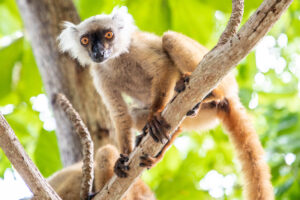
Nosy Be is an island off the northwest coast of Madagascar Island, the fourth largest island in the world. There are two major industries on Nosy Be: Ylang-Ylang plantations and tourism.
Ylang-ylang is a flower valued for its essential oils that provide a key ingredient in production of perfumes and essential oil. Its intense fragrance is why Nosy Be is known as “l’île aux parfums” or The Perfumed Island. French missionaries introduced the trees from Southeast Asia in 1920.
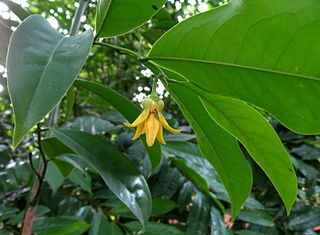
Madagascar as a whole contributes 25 per cent of the world supply of Ylang-Ylang essential oil. In 2018 Nosy Be processed nearly 35 metric tons of the flower. Ylang-ylang blossoms can be harvested all year round. The pickers’ complete their day at 9:00 a.m. when the fragrance is at its strongest. The flowers quickly lose their scent and must be processed via steam distillation the same day they are harvested. Distillation takes about ten hours. A short video about yang-ylang processing is at the end of this blog.
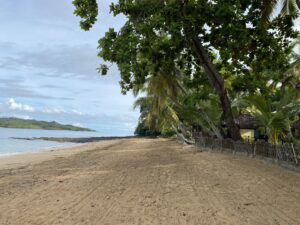
Nosy Be is the only island in Madagascar with resort facilities to entice visitors looking for a tropical experience. The scenery is exotic and the people are friendly. Nosy Be is also a good place to stay if you want to visit lemurs.
Madagascar and the nearby Comoro Islands are the only places lemurs live in the wild. Within the country, there are 113 species of lemur. Unfortunately, 95 per cent of lemurs are on the edge of extinction. The largest threat is habitat loss.
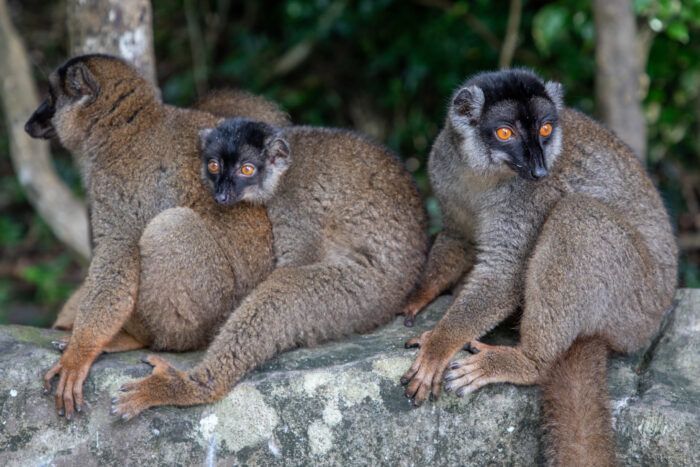
We visited the lemurs on Nosy Antosha, a private reserve. There are five lemur species on this island which is a couple hours away by speedboat from Nosy Be. The lemurs are habituated to human contact and happy to jump on your shoulder and walk down your arm to reach the smashed banana a staff member smears on your hand.
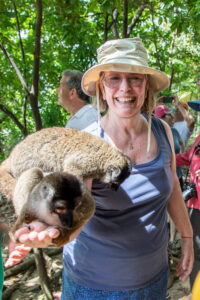
These particular lemurs are small, light-weight, and very gentle as they lap up the smashed banana offerings. Lemur fur is surprisingly soft. The tan lemurs were the most aggressive. In their desire to reach the food, they try to chase off the shyer lemurs.
The lemurs I met made soft clicking noises, but the creatures are also known for their shrieks. In the sixteenth century shrieking lemurs woke up Portuguese explorers. The sound and the lemurs’ bright eyes glowing in the dark convinced the explorers that the ghosts of their dead companions had returned. They called the creatures lemurs, Latin for ghosts.
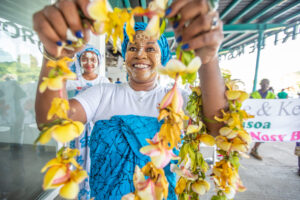
Women at Nosy Be often wear intricate designs of white or yellow face paint on their faces. The paint is made from tree bark that is ground into powder and then made into a paste. The paint protects the skin from the sun, and deters insects. The designs are simply a way to be more beautiful.
🐒🐒🐒
Photo of Ylang-Ylang blossom by Forestowlet. Seaside photo by Author. All other photos by Juliet Lemon.
James Sleigh. It’s Essential:The Ylang Ylang Trade on Nosy Be. 2019.
Travel Arrangements by Abercrombie & Kent

Sandra Wagner-Wright holds the doctoral degree in history and taught women’s and global history at the University of Hawai`i. Sandra travels for her research, most recently to Salem, Massachusetts, the setting of her new Salem Stories series. She also enjoys traveling for new experiences. Recent trips include Antarctica and a river cruise on the Rhine from Amsterdam to Basel.
Sandra particularly likes writing about strong women who make a difference. She lives in Hilo, Hawai`i with her family and writes a blog relating to history, travel, and the idiosyncrasies of life.

